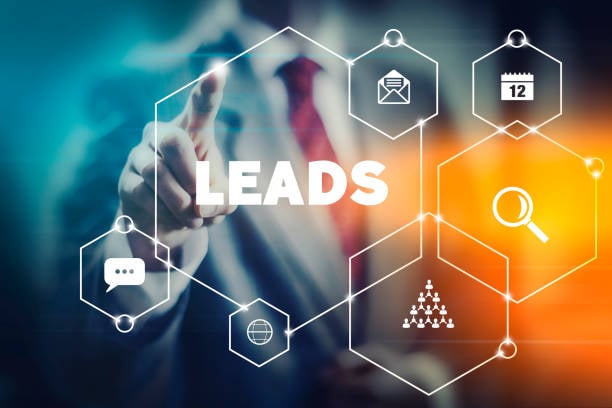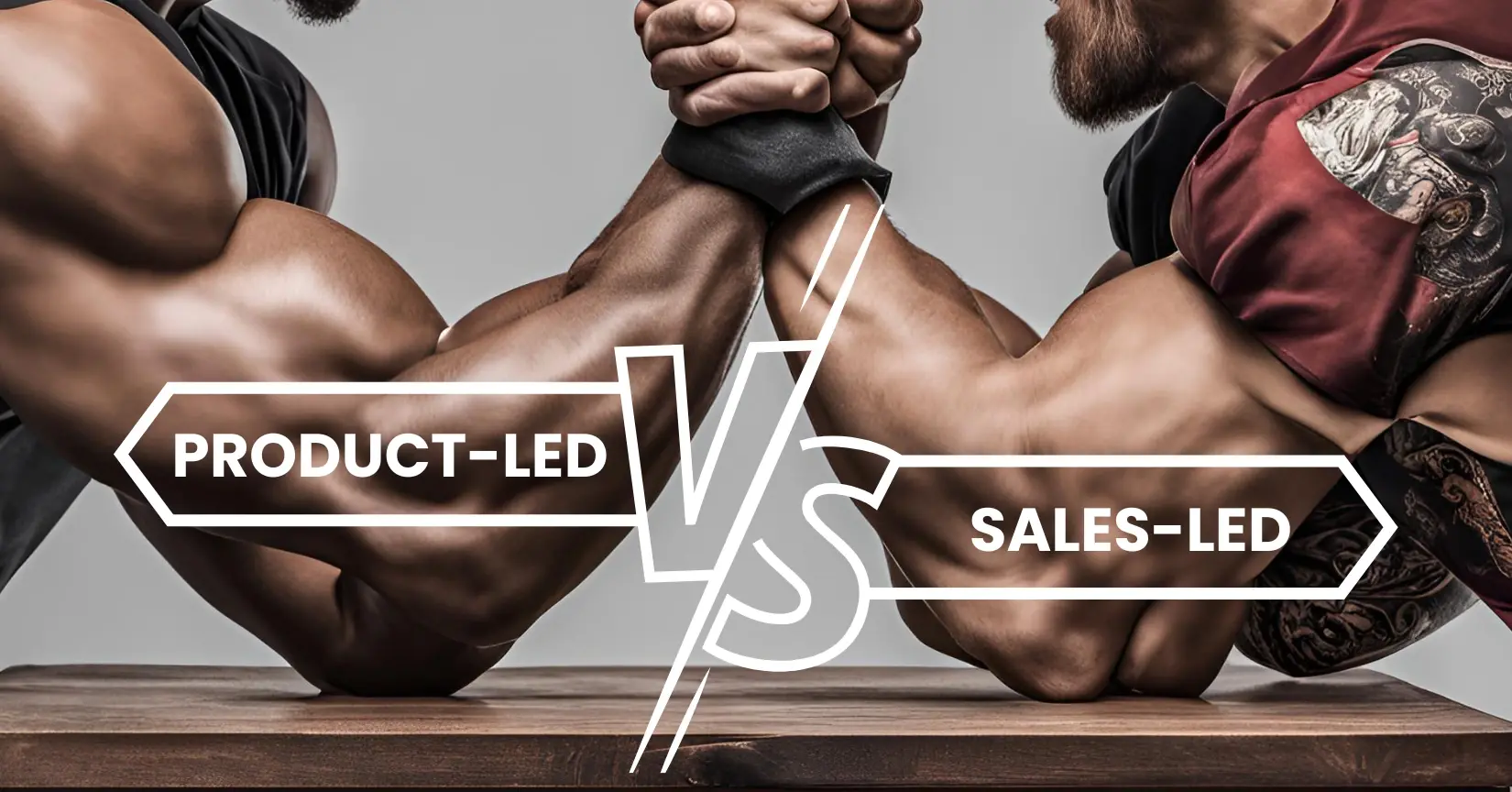With increasingly complex buyer journeys and larger buying groups informing the purchase decisions, many companies have begun re-thinking their demand generation and growth models.
As post-pandemic belt-tightening is still very much a reality, companies are under more pressure than ever to deliver a more effective sales pipeline. But for many marketing and revenue executives, getting the right leads through the door isn’t easy, especially as demand evolves.
Many of the most successful software IPOs of the last decade drove growth and revenue using a Product Lead Growth (PLG) go-to-market strategy, in part because it allows companies to reach a wider audience through a marketing and self-serve product adoption and keep their Customer Acquisition Costs (CAC) low by avoiding the need for large and costly sales teams.
Product-led growth is bull-market proven, but current bear market conditions have not been favorable to the model. At scale, public PLG companies have seen a 5–10% dip in profitability compared to public companies relying on Sales Lead Growth (SLG) models, according to research by Tomasz Tunguz.
Why Hybrid PLG+SLG is Eclipsing PLG
Hybrid growth models, marrying PLG and SLG is eclipsing pure play product-led growth for B2B in the current economy because customers are more cost and expense conscious in tighter economic times, as they very well should be.
Good companies understand the need to adopt a ‘do more with less’ and ‘only spend on what’s essential’ approach to business to survive. This frugality is seriously affecting the spending power of SMB and the frequency and interest of new product purchases by Midmarket and Enterprise companies.
In short SMBs can’t afford to spend and Midmarket and Enterprise aren’t actively looking to spend. In today’s SaaS bear market, the bottom has fallen out of the traditional SMB market and PLG’s not consistent at opening opportunities with Midmarket (MM) or Enterprise (ENT) companies.
PLG strategy relies on monetization through upsells and cross-sells after the initial purchase, but with SMB not buying and MM + ENT not pro-actively looking, that strategy alone is failing.
SLG proves to be more successful in driving growth in this bear market thanks to its focus on hyper targeting and ability to engage up market prospects who can afford to spend. If you know who should be buying, can afford to buy, and ROI is provable — that’s who you need to be talking to.
PLG’s focus on building an easy-to-use and easy-to-understand product and driving self-service channels was incredibly successful at driving fast and reliable growth during what was the longest bull market in history.
A market dominated by free money and a growth at all costs mentality created the perfect environment for a buyer-driven sales process, with adoption driven by hyper-growth focused clients, meant that PLG companies were able to focus more capital on product and less on building out costly sales departments to drive adoption.
But for the B2B PLG company, those days are behind us. Today’s B2B SaaS lead generation market is staunchly focused on default alive business models built using sound revenue unit economics that are profitable.
This doesn’t mean the death of PLG. It means that PLG alone is no longer a sound strategy.
The PLG Revenue Ceiling
In addition to market conditions, we are learning that PLG has a revenue ceiling. Once companies reach a certain threshold (usually around the $50-100M ARR mark), growth stalls.
Research shows that the ceiling is real. While a PLG model can be an effective and efficient startup activator, additional routes are required to grow at scale. But balancing growth and efficiency is difficult when building new sales motions.
Consider that PLG companies often face relatively higher research & development expenses, especially as they focus on more and more product investments to drive user acquisition, onboarding, paid conversion, and future expansion. In this case, engineering and product costs often replace the costs of the more robust sales team activities seen in other models.
As PLG-focused companies expand their routes to market rather than relying on their existing PLG infrastructure, saving money in one area costs in another.
The MidMarket and Enterprise Customer Journey is Different
Analysts are watching closely as companies are beginning to move away from pure play PLG — and moving up market to secure large deals.
MidMarket & Enterprise need to have a compelling reason to start a buying journey. This is where outbound lead generation in concert with PLG can open more doors, building a more robust pipeline in terms of quantity and quality of deals, especially as it pertains to deal sizes.
These larger prospects engage in multiple differentiated journeys and transitioning PLG companies are coming to understand that they can better drive growth by creating journeys that align with their prospects’ pain points, jobs to be done, and strict focus on ROI.

An SLG-driven demand engine keeps efforts synergized and scalable
Also, these longer buying cycles make it imperative to keep prospects and all the relevant members of the buying committee engaged in longer journeys with more interaction points that demonstrate value and drive impact along the way.
Marketing and sales teams are discovering that they can increase win rates by aligning journeys for individual personas, while at the same time managing the buying committee’s purposes collectively in a multi-buyer journey. This produces better win rates and stronger 1-1 relationships with members of buying committees.
The great advantage for PLG teams making the transition, is that PLG teams tend to look at their revenue operations as unified (without marketing and sales siloed separately). Making them perfectly positioned to provide smoother and more efficient customer journeys, with sales and marketing complementing one another, ultimately increasing conversion rates and driving revenue growth.
Pain Points not Touch Points
New interaction channels have made it more important that customer journeys not be as rigidly tied to specific touchpoints as we’ve seen in the past. Each prospect's journey will be unique.
There is no such thing as a linear customer journey. And trying to rely on the perfect alignment of steps is going to cause more headaches and bad data. The new world order of demand gen is all about trying to understand and control Dark Social — which is difficult.
It’s about being customer-centric, not company centric as stated by Gene Cornfield from the Harvard Business Review, who discusses the ‘democratization of interaction channels’ and how it relates to prospect journeys.
The demand engine needs to be a comprehensive and iterative process that aims to attract, engage, and convert potential customers — it needs to inform your prospects and make them aware that your product exists to solve their specific problem.
Instead of making purchasing the point of impact, companies are urged to adopt pain points as the new point of impact on which to focus marketing efforts, which aligns well with a sales-led growth model, focused on outbound lead generation. This is because SLG allows companies to narrow their targeting on ideal customers that are most likely to feel the pain, and have the highest probability to investigate and ultimately purchase your solution.
The Benefits of SLG
SLG models establish a feedback loop between sales, marketing, and product teams to ensure alignment and continuous improvement and growth at scale.

The right lead generation team creates a feedback loop between sales, marketing, and product teams
Even for smaller mid-tier companies, SLG models contribute to consistent, attributable growth for three main reasons:
Lead Generation: Generating ideal customer profiles, focusing on how to build an outbound sales strategy, and investing in stellar content creation allows sales teams to find the ideal prospects, land them, and nurture them.
-
-
-
Data Analytics: Analyzing data to measure the effectiveness of sales efforts, identify areas for improvement, and optimize the sales process means that your efforts never stall; companies stay ahead of the pack by keeping pace with the data.
Scalability: An SLG-driven demand engine keeps efforts scalable. Companies can handle increased demand and SLG models also make retention easy, as your sales team is already hooked in to the customer journey. SLG excels at retaining existing customers and maximizing their lifetime value. -
-
Promoting Customized Relationship-Building
Today’s increasingly fickle prospects have a higher bar for engagement when it comes to entering a customer journey. They are short on money and short on time.
SLG outbound lead generation allows companies to build customized and relevant business cases that specifically outline why prospects should care and be interested.
This is especially useful for more complex products that don’t sell themselves. By taking the time to understand the prospect’s needs and interests, companies can create a more compelling reason for individuals to enter the buying journey, addressing not only their specific pain points but their unique solution requirements.
This kind of attention naturally leads to increased relationship-building. SLG models can be especially valuable for organizations in markets with long sales cycles, as it allows companies to nurture the business relationship over time, so that even if a valued client leaves, the relationship has been cultivated over time, increasing the likelihood of return business down the line.
Transitioning to a Sales Led approach
Establishing a feedback loop between sales, marketing, and product teams can be a difficult and costly endeavour, especially if years of PLG focus have left your company a little thin on the sales department front.
If you’re curious how to outsource lead generation properly, just remember that working with a sales agency or lead generation business that offers the integration of their outbound sales team with your internal objectives will keep things synergized and easier to track. Top-tier outbound sales providers work as a seamless partner, providing you with a specialized and designated BDR, whose laser-focused efforts are tied directly to your business objectives, maximizing ROI and revenue attribution.
 A sales-led lead generation campaign can help you outpace your competitors
A sales-led lead generation campaign can help you outpace your competitors
Look for a company that provides designated sales teams that seamlessly connect with and integrate into your current revenue team. We provide clients with a full outbound GTM team for much less than what you would pay if you were to build a team yourself, especially when you factor all the time and opportunity cost spent building and ramping a team in house.
The right lead generation specialist will help you maximize value-for-effort, while at the same time freeing your revenue team to focus on what it does best within your company.
Stay Competitive with Hybrid SLG+PLG strategy
With increasingly fickle users, and more complex customer journeys, SLG- focused SaaS is fast becoming the go-to for companies looking to grow while also nurturing and maintaining future client relations, and because qualified outsourced lead generation agencies offer the benefit of a well-trained sales force, growth is possible without the cost and onboarding of building that sales team in-house.
Effective sales strategies and execution create a strong competitive advantage. In aggressive markets, companies that excel at sales-led growth can outpace their competitors, grow at a predictable pace, and gain a significant market share.
Like what you’re reading? Sign up for our newsletter below. It’s an easy, no-cost way to stay ahead of the sales trends. And if you’d like to learn more about this and other sales developments on the reg, check back in with The Sales Factory blog soon for more industry insights.
If you’re curious about why we’re seeing this change, the Sales Factory can shed some light on this interesting evolution.
%20-%20logo-01%201.png)
